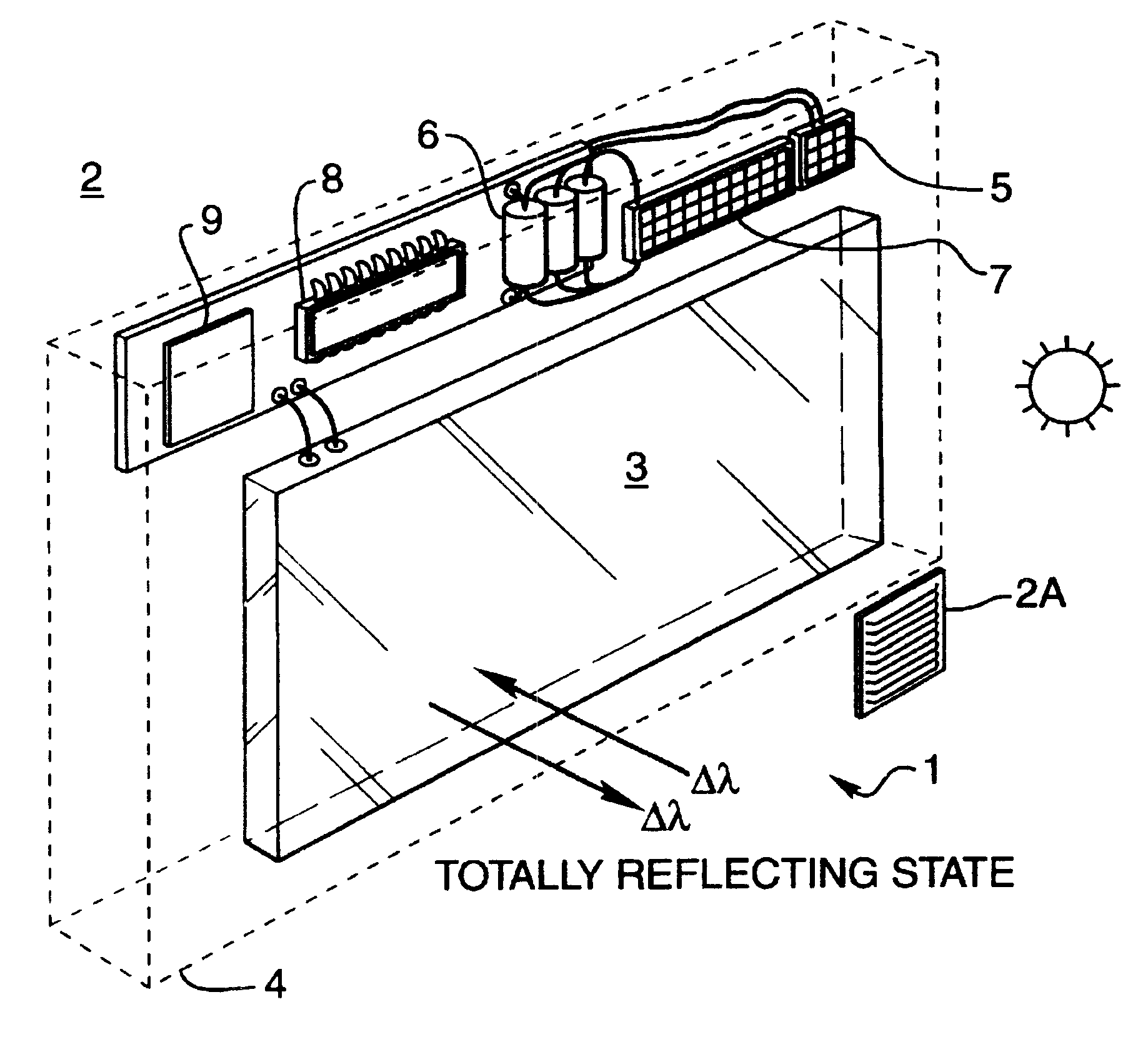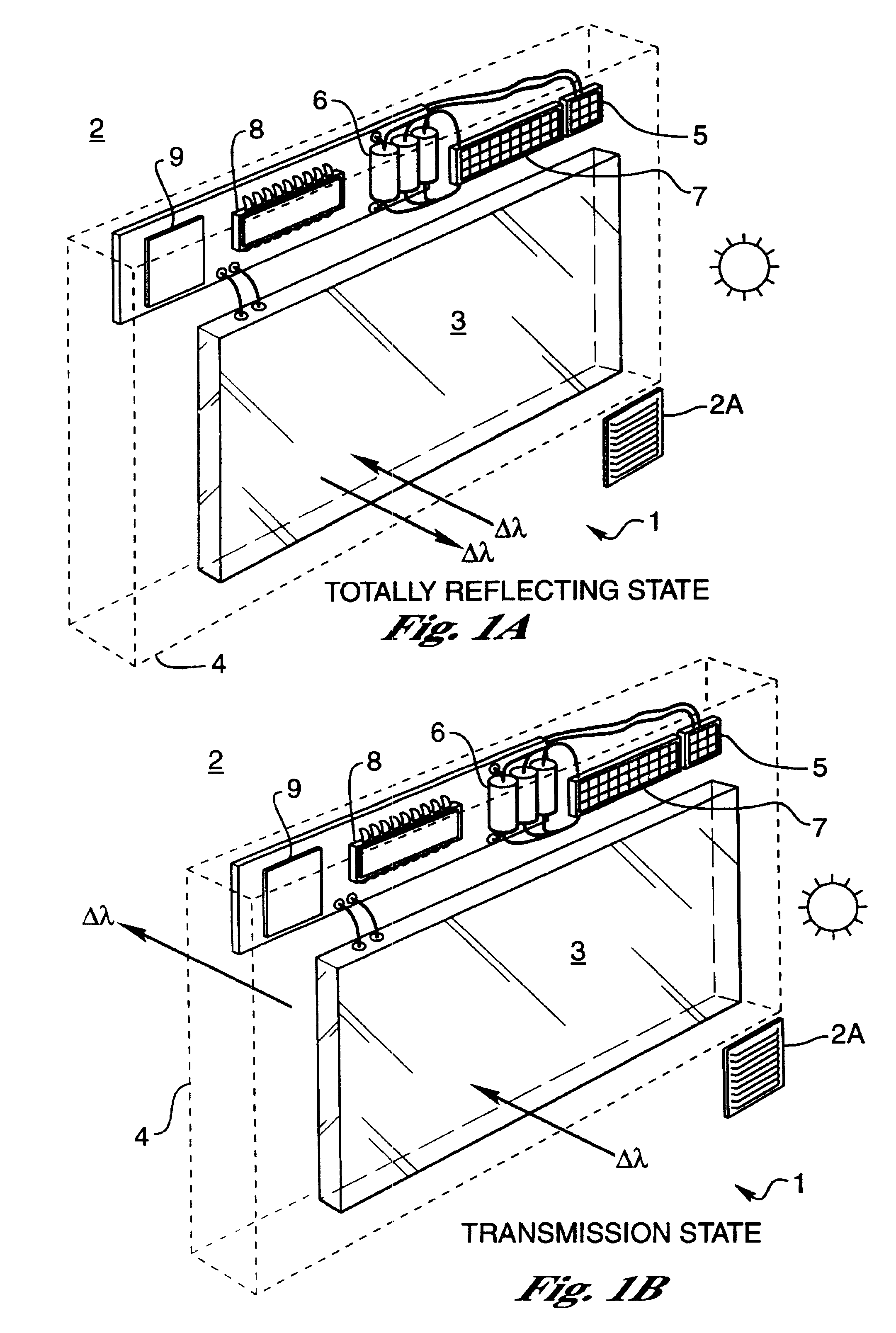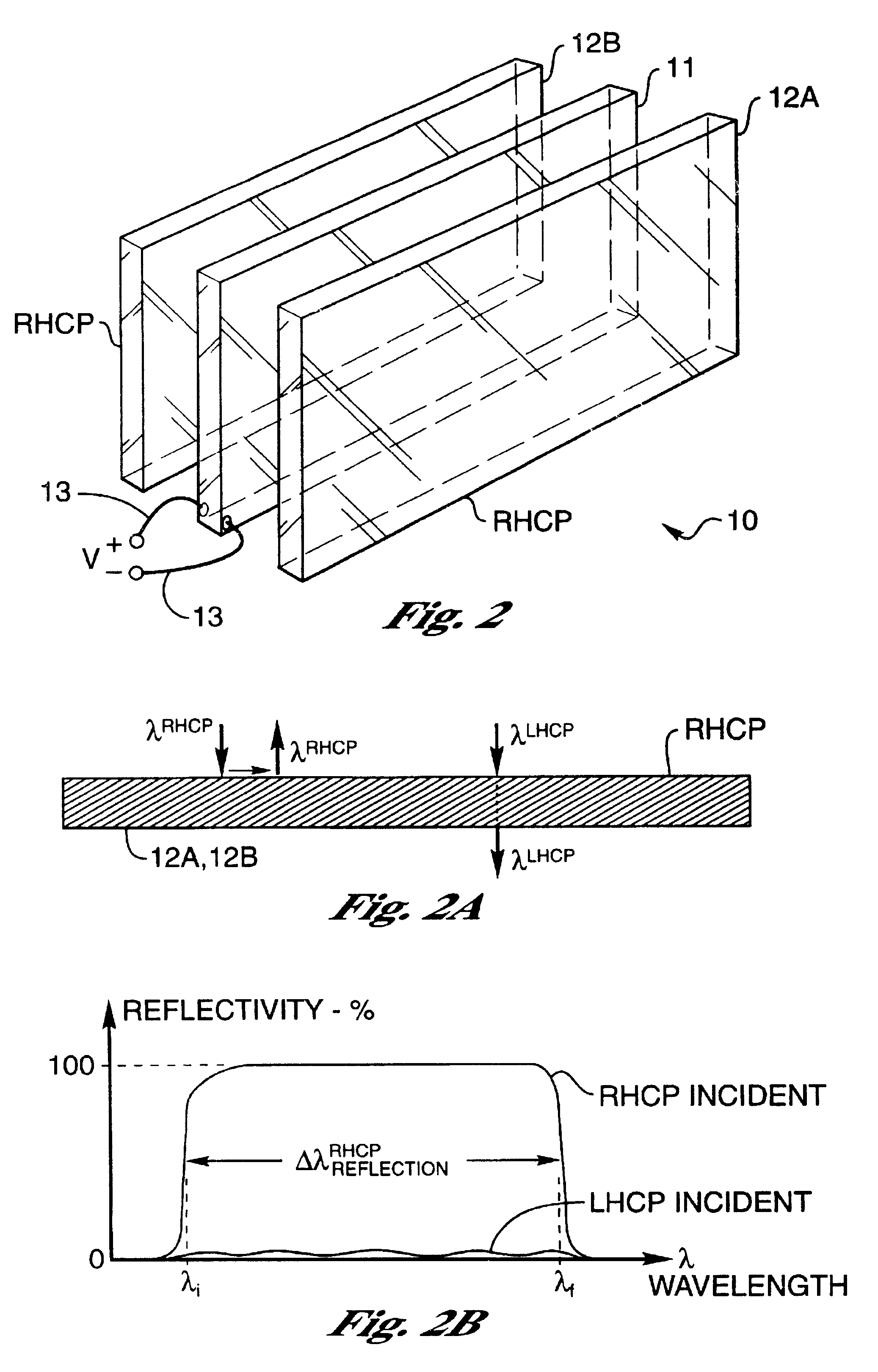Non-absorptive electro-optical glazing structure employing composite infrared reflective polarizing filter
a non-absorptive, electro-optical glazing technology, applied in the direction of polarizing elements, door/window protective devices, instruments, etc., can solve the problems of color fading, increase in interior temperature, and form is not without problems
- Summary
- Abstract
- Description
- Claims
- Application Information
AI Technical Summary
Benefits of technology
Problems solved by technology
Method used
Image
Examples
embodiment 10
The first illustrative embodiment of the electro-optical glazing structure hereof will be described with reference to FIGS. 2 through 3B. As shown in FIG. 2, the electro-optical glazing structure of the first illustrative embodiment 10 comprises: an electrically-active .pi.-phase retardation panel 11 interposed between a pair of electrically-passive right-hand circularly polarized (RHCP) electromagnetic radiation reflecting panels 12A and 12B, respectively, for imparting a .pi.-phase retardation to electromagnetic radiation transmitted therethrough in response to optical-state control voltages applied across the electrically-active .pi.-phase retardation panel 11; and electrically conductive means 13 for applying optical-state control voltages to the electrically-active .pi.-phase retardation panel 11. Preferably, the electro-optical glazing structure of FIG. 2 is mounted within a frame structure as described in connection with the generalized embodiment shown in FIGS. 1A and 1B, an...
first embodiment
In FIG. 2C, the .pi.-phase retardation panel 11 is shown along with a specification of its various states of operation. As shown, when a non-zero voltage (e.g. 20 Volts) is applied across the phase retardation panel, 0-phase retardation is imparted to electromagnetic radiation transmitted therethrough. When a control voltage of zero volts is applied across the phase retardation panel, it imparts a .pi.-phase retardation to electromagnetic radiation transmitted therethrough having a wavelength within its operating band .alpha..lambda..sub..pi. which is typically 300-1000 nanometers.
second embodiment
In FIG. 2D, the .pi.-phase retardation panel is shown along with a specification of its states of operation. As shown, when a control voltage of zero volts is applied across this retardation panel, it imparts a O-phase shift to electromagnetic radiation having a wavelength within its operating band which is typically 350 nanometers, whereas .pi.-phase retardation is imparted to such electromagnetic radiation when a non-zero voltage (e.g. 5-50 Volts) is applied thereacross. For wavelengths outside of the operating band, a phase shift other than .pi.-radians is imparted to incident electromagnetic radiation when a non-zero voltage is applied.
Physically interfacing the subcomponent panels of the electro-optical glazing structure of FIG. 2 can be achieved using conventional lamination techniques well known in the glazing art.
The operation of the glazing structure of FIG. 2 will now be described with reference to FIGS. 3A and 3B, where the .pi.-phase retardation panel of FIG. 2C is used ...
PUM
| Property | Measurement | Unit |
|---|---|---|
| Electromagnetic reflectivity | aaaaa | aaaaa |
| temperatures | aaaaa | aaaaa |
| rotation | aaaaa | aaaaa |
Abstract
Description
Claims
Application Information
 Login to View More
Login to View More - R&D
- Intellectual Property
- Life Sciences
- Materials
- Tech Scout
- Unparalleled Data Quality
- Higher Quality Content
- 60% Fewer Hallucinations
Browse by: Latest US Patents, China's latest patents, Technical Efficacy Thesaurus, Application Domain, Technology Topic, Popular Technical Reports.
© 2025 PatSnap. All rights reserved.Legal|Privacy policy|Modern Slavery Act Transparency Statement|Sitemap|About US| Contact US: help@patsnap.com



